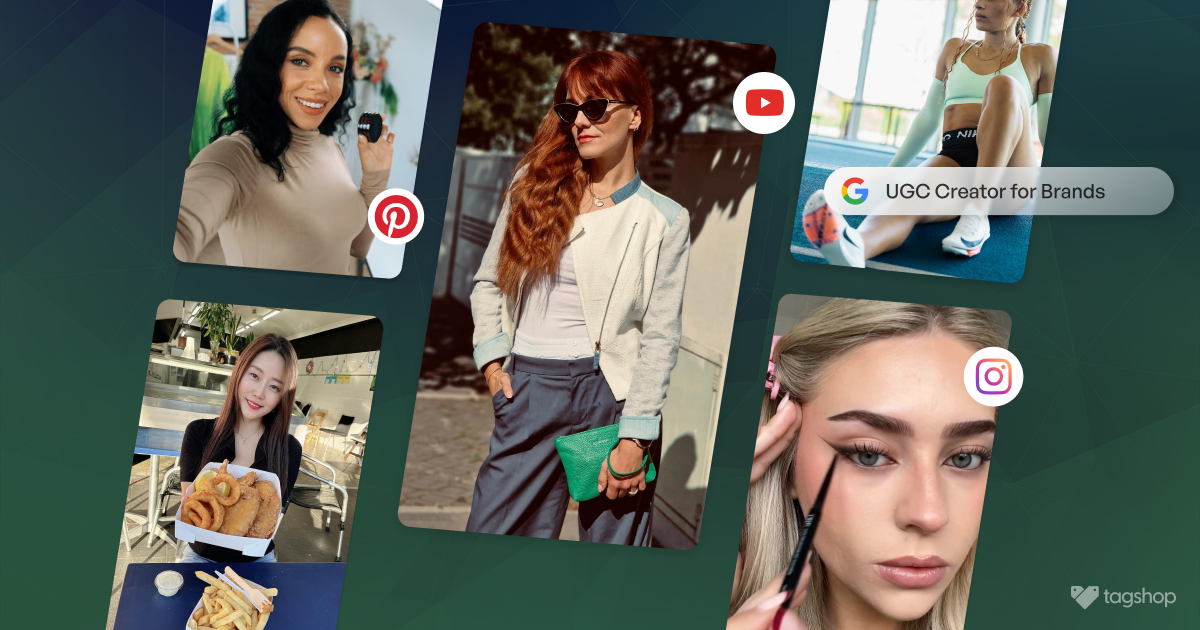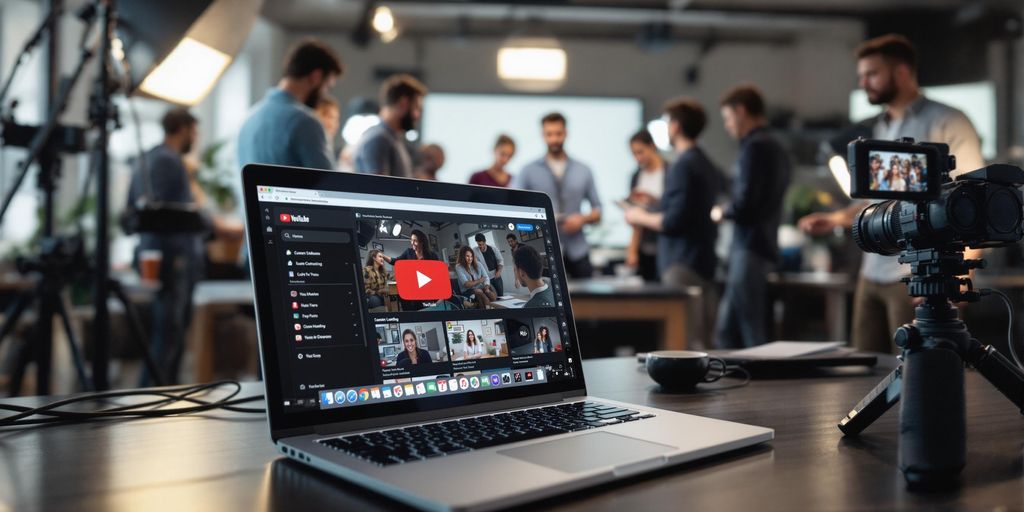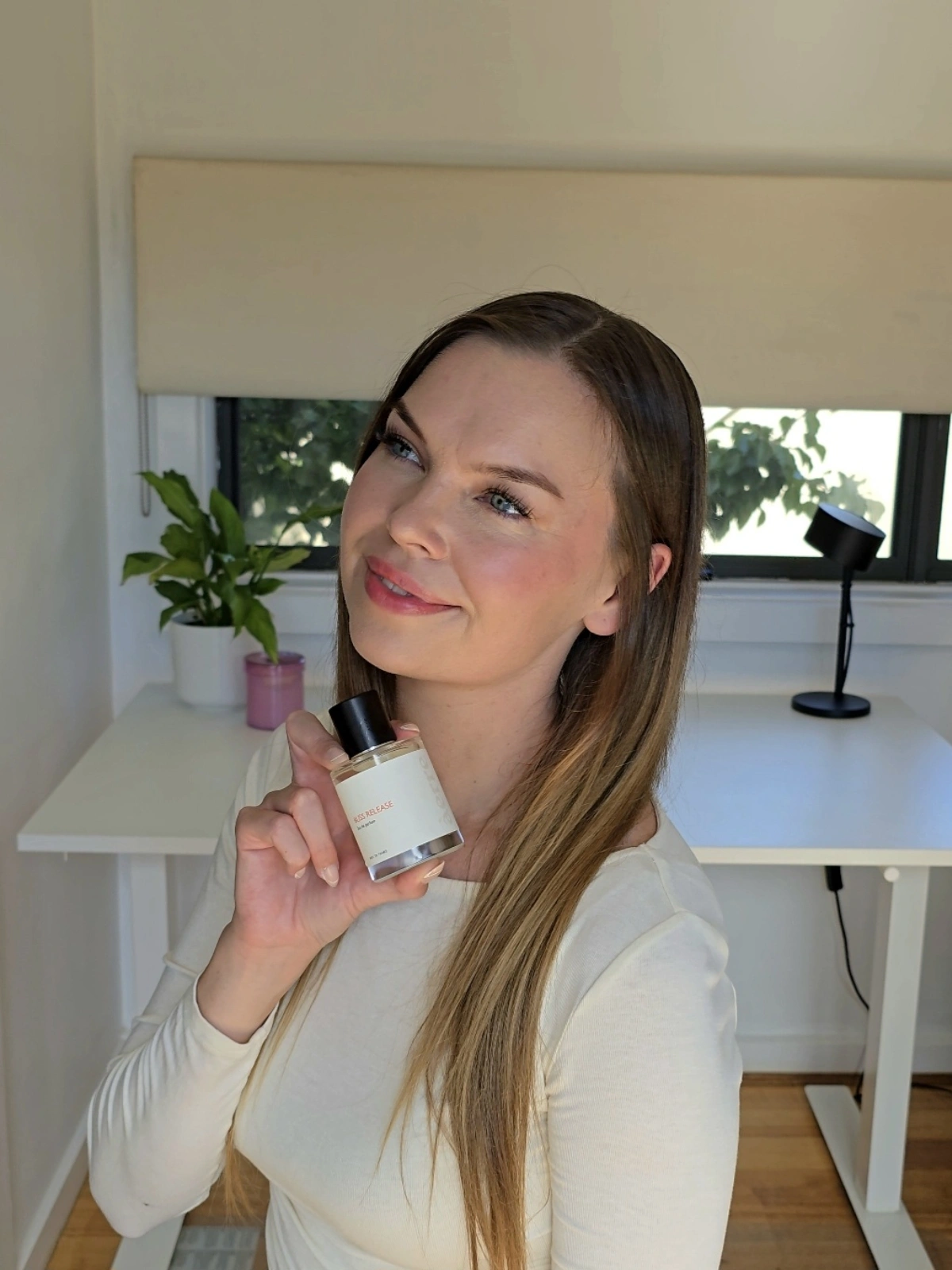YouTube has become a huge platform for advertising, and if you’re looking to get your message out there, you need to know how to make the most of it. In 2025, the landscape of YouTube advertising is changing fast, and it’s important to stay ahead of the curve. This guide will walk you through everything from understanding the platform to creating ads that really grab attention. Whether you’re just starting out or looking to improve your current strategy, we’ve got you covered.
Key Takeaways
- Video content is more popular than ever, making YouTube a top choice for advertisers.
- Knowing your audience is key to crafting effective ads that connect.
- Choose the right ad format to match your goals and audience preferences.
- Regularly analyze your ad performance to see what works and what doesn’t.
- Partnering with influencers can boost your reach and credibility on the platform.
Understanding The YouTube Advertising Landscape
The Rise Of Video Content
Okay, so video content is, like, everywhere now. It’s not just cat videos and music anymore (though, let’s be real, those are still pretty great). Businesses are finally catching on that people would rather watch something than read a wall of text. I mean, who wouldn’t? Think about it: you can learn how to bake a cake, fix your car, or even learn a new language, all from watching videos. It’s super convenient, and honestly, way more engaging than reading a manual.
The shift towards video is undeniable. People are consuming more video content than ever before, and this trend is only going to continue. If you’re not using video in your marketing strategy, you’re missing out on a huge opportunity.
Here’s a quick look at how video consumption has changed:
- 2020: The Average person watched 6 hours of video per week.
- 2023: The Average person watched 9 hours of video per week.
- 2025 (projected): The Average person will watch 12 hours of video per week.
Why YouTube Is A Game Changer
YouTube isn’t just another video platform; it’s a whole ecosystem. It’s the second largest search engine in the world, which is kinda mind-blowing when you think about it. People go there to find answers, learn new skills, and, of course, be entertained. For advertisers, this means you’ve got a massive audience at your fingertips, all actively searching for stuff. Plus, YouTube’s targeting options are seriously impressive. You can get super specific with who sees your ads, which means you’re not wasting money showing them to people who aren’t interested. It’s like having a laser-focused advertising beam. And let’s not forget about the power of short-form user-generated content on the platform.
Key Statistics To Know
Alright, let’s get down to brass tacks. Numbers don’t lie, and these stats show why YouTube advertising is worth your time and money. First off, YouTube has over 2 billion logged-in monthly users. That’s a huge pool of potential customers. Secondly, mobile video consumption is through the roof. People are watching videos on their phones everywhere – on the bus, in line at the grocery store, even (probably) in the bathroom. Make sure your ads are mobile-friendly! And finally, don’t underestimate the power of YouTube for reaching younger audiences. If you’re trying to connect with Gen Z or Millennials, YouTube is where they’re hanging out. Also, remember to empower UGC creators to maximize engagement.
Here’s a quick rundown:
- Over 2 billion logged-in monthly YouTube users.
- 70% of YouTube views come from mobile devices.
- YouTube reaches more 18-49 year-olds than any broadcast or cable TV network.
Crafting Your YouTube Advertising Strategy
Alright, so you’re ready to jump into YouTube advertising? Awesome! But before you start throwing money at videos, let’s get a strategy in place. Think of it like planning a road trip – you wouldn’t just hop in the car and drive without knowing where you’re going, right? Same deal here. Let’s make sure your ads actually reach the right people and get you the results you want. And remember, you can always LOGIN TO UGCLAUNCH for more resources.
Identifying Your Target Audience
Okay, who are you trying to reach? This isn’t just about age and gender anymore. Think deeply about their interests, their habits, and what problems your product or service solves for them. Are they gamers? DIY enthusiasts? Fashion gurus? The more specific you get, the better you can target your ads.
- Demographics: Age, gender, location, income.
- Interests: Hobbies, passions, favorite YouTubers.
- Behaviors: What videos do they watch? What products do they buy?
Setting Clear Objectives
What do you want to achieve with your YouTube ads? More subscribers? More website traffic? More sales? Having a clear objective is super important because it guides everything else. Don’t just say, “I want more customers.” Get specific. For example:
- Increase website traffic by 20% in the next quarter.
- Generate 500 new leads in the next month.
- Boost brand awareness among millennials.
Setting SMART goals (Specific, Measurable, Achievable, Relevant, Time-bound) will help you track your progress and know if your ads are working.
Choosing The Right Ad Format
YouTube offers a bunch of different ad formats, and picking the right one can make a huge difference. Here’s a quick rundown:
- Skippable in-stream ads: These play before, during, or after other videos, and viewers can skip them after 5 seconds. Great for brand awareness.
- Non-skippable in-stream ads: Viewers have to watch the entire ad. Use these sparingly, as they can be annoying if not done well. Best for important messages.
- Bumper ads: Short, 6-second ads that play before a video. Perfect for quick, memorable messages.
- Discovery ads: These appear in YouTube search results, on the YouTube homepage, and on video watch pages. Good for driving traffic to your channel.
Consider your budget, your message, and your target audience when choosing an ad format. Experiment to see what works best for you! Here’s a table to help you decide:
| Ad Format | Best For | Considerations |
|---|---|---|
| Skippable In-Stream | Brand Awareness | Make the first 5 seconds count! |
| Non-Skippable In-Stream | Important Messages | Keep it short and engaging. |
| Bumper Ads | Quick, Memorable Messages | Be concise and visually appealing. |
| Discovery Ads | Driving Channel Traffic | Use compelling thumbnails and ad copy. |
Creating Engaging Video Ads

Alright, so you’re ready to make some YouTube ads that don’t suck, huh? Good. Because nobody wants to waste money on ads that people skip after five seconds. Let’s get into how to make some seriously engaging video ads.
Storytelling Techniques That Work
Forget the hard sell right away. Seriously. Think about telling a story. People connect with stories. Start with a problem, show how your product or service solves it, and end with a happy customer. Keep it short and sweet, though; attention spans are shrinking faster than my patience on a Monday morning.
- Use relatable characters
- Create a clear narrative arc
- Evoke emotion (humor, empathy, etc.)
Storytelling is more than just reciting facts; it’s about creating an emotional connection with your audience. Make them feel something, and they’re more likely to remember your ad and, more importantly, your brand.
Visuals That Capture Attention
Okay, so you’ve got a killer story. Great! Now, make it look good. Use high-quality footage, interesting angles, and dynamic editing. Nobody wants to watch a blurry, shaky video. Invest in decent equipment or hire someone who knows what they’re doing. It’s worth it. User-generated content creators enhance marketing strategies and engage audiences effectively.
- Use bright, vibrant colors
- Incorporate motion graphics
- Keep the visuals dynamic and engaging
Call-To-Action Best Practices
So, you’ve hooked them with your story and visuals. Now what? Tell them what to do! Make your call-to-action (CTA) clear, concise, and compelling. Don’t be shy. Tell them to visit your website, subscribe to your channel, or buy your product. And make it easy for them to do it. Empowering UGC creators is essential for success in today’s digital landscape.
- Make the CTA visible and prominent
- Use action-oriented language
- Create a sense of urgency
Here’s a quick look at some CTA performance metrics:
| CTA Type | Click-Through Rate (CTR) | Conversion Rate |
|---|---|---|
| “Shop Now” | 2.5% | 5% |
| “Learn More” | 1.8% | 3% |
| “Subscribe Today” | 3.0% | N/A |
Optimizing Your YouTube Ad Campaigns
So, you’ve got your ads up and running on YouTube. Awesome! But don’t just sit back and hope for the best. You gotta keep tweaking things to get the most out of your budget. It’s all about testing, analyzing, and making changes as you go. Think of it like fine-tuning a race car – small adjustments can make a huge difference.
A/B Testing For Success
A/B testing is your best friend. Seriously. Try out different headlines, thumbnails, or even entire ad scripts. See what resonates with your audience. For example, run one ad with a funny tone and another with a more serious one. Which one gets more clicks? Which one leads to more conversions? That’s the kind of stuff you need to know. A/B testing is the key to understanding what works and what doesn’t.
Here’s a simple example of how you might structure an A/B test:
| Element | Version A | Version B |
|---|---|---|
| Headline | “Get Yours Now!” | “Limited Time Offer” |
| Thumbnail | Image of product | Image of happy customer |
Analyzing Performance Metrics
Numbers, numbers, numbers! Don’t be scared. YouTube Analytics is packed with valuable data. Pay attention to things like:
- View-through rate (VTR): How many people watch your ad all the way through?
- Click-through rate (CTR): How many people click on your ad?
- Cost per view (CPV): How much are you paying for each view?
- Conversion rate: How many people take the desired action after seeing your ad (e.g., visiting your website, making a purchase)?
If your VTR is low, maybe your ad isn’t engaging enough. If your CTR is low, maybe your headline or thumbnail needs work. If your CPV is too high, you might need to adjust your targeting or bidding strategy. Keep an eye on these metrics and use them to guide your decisions. Aspiring creators can showcase their work to attract brand partnerships by creating a user-generated content portfolio.
Adjusting Your Strategy On The Fly
Things change fast on YouTube. What worked last week might not work this week. Be prepared to make adjustments to your strategy as needed. Maybe a competitor launches a similar product, or maybe a new trend emerges that you can capitalize on. Stay flexible and be ready to adapt. Don’t be afraid to pause underperforming ads and try something new. The YouTube landscape is always evolving, and your ad campaigns should too.
Remember, optimizing your YouTube ad campaigns is an ongoing process. It’s not a one-time thing. Keep testing, keep analyzing, and keep adjusting. With a little effort, you can maximize your reach and get the most out of your advertising budget.
Leveraging Influencer Partnerships

Influencer partnerships can seriously boost your YouTube game. It’s all about finding the right people to connect with your audience in a way that feels real and not just like another ad. Let’s break down how to make it work for you.
Finding The Right Influencers
Finding the right influencers is like finding the perfect puzzle piece. You need someone whose audience matches yours, and whose style fits your brand. Don’t just look at follower count; engagement is key. Are people actually interacting with their content? Do they seem like a good fit for your brand’s image? Use tools to analyze their audience demographics and engagement rates.
- Check their past collaborations.
- Look for authenticity.
- Consider micro-influencers.
Building Authentic Relationships
It’s not just about a one-off promotion; it’s about building a real connection. Treat influencers like partners, not just billboards. Get to know them, understand their values, and let them have creative freedom. The more authentic the relationship, the more authentic the content will be, and the better it will drive engagement with your audience.
Building trust takes time. Don’t rush the process. Focus on creating a mutually beneficial relationship that lasts.
Measuring Influencer Impact
So, how do you know if your influencer partnership is actually working? Track everything! Look at views, likes, comments, and shares on their videos. Use unique tracking links to see how much traffic they’re sending to your website. And don’t forget to ask your audience directly! Run polls or surveys to see if they’re noticing the influencer content and if it’s influencing their purchasing decisions. Also, make sure you Sign up and create your creator profile on platforms that help track these metrics. Data is your friend here.
| Metric | How to Track |
|---|---|
| Views | YouTube Analytics |
| Website Traffic | Unique tracking links, Google Analytics |
| Engagement | Comments, likes, shares on influencer content |
Navigating YouTube Ad Policies

Alright, so you’re ready to throw some ads up on YouTube and rake in the views, right? Awesome! But hold up a sec. YouTube has rules, like any platform, and you gotta play by them. It’s not just about making a cool video; it’s about making a cool video that doesn’t get you banned. Let’s break down how to keep your ads on the right side of the line.
Understanding Community Guidelines
YouTube’s community guidelines are basically the Ten Commandments of the platform. They cover everything from hate speech to graphic content, and they apply to your ads just as much as they apply to regular videos. Read them. Seriously. It might seem like a drag, but knowing what’s off-limits is way better than finding out the hard way when your ad gets flagged. Think of it as knowing the rules of the road before you get behind the wheel. It’s all about keeping the YouTube community a safe and fun place for everyone. You can find the YouTube guidelines on their help pages.
Avoiding Common Pitfalls
Okay, so you’ve read the guidelines (right?). Now, let’s talk about some common mistakes people make with their YouTube ads. One big one is misleading claims. Don’t promise something your product can’t deliver. Another is using copyrighted material without permission. That includes music, video clips, and even images. And definitely don’t try to trick people into clicking your ad. Transparency is key. Here’s a quick list of things to watch out for:
- Misleading claims
- Copyrighted material
- Clickbait tactics
- Inappropriate content
- Violating privacy
Staying Compliant With Regulations
YouTube isn’t the only one setting the rules. Government agencies like the FTC also have regulations about online advertising. These rules cover things like disclosures, endorsements, and data privacy. Make sure you’re up-to-date on these regulations, especially if you’re targeting kids or collecting personal information. It’s a bit of a legal maze, but it’s worth it to avoid fines and other penalties. It’s always a good idea to consult with a legal professional if you’re unsure about something.
Staying compliant with regulations is not just about avoiding penalties; it’s about building trust with your audience. When people know they can trust your ads, they’re more likely to engage with your brand. It’s a win-win situation.
Exploring Advanced Targeting Options
Okay, so you’ve got the basics down. Now it’s time to get serious about who sees your ads. YouTube’s targeting is way more than just age and gender. We’re talking next-level stuff to really laser-focus your campaigns. It’s all about finding the right people, at the right time, with the right message. Let’s jump in!
Demographic Targeting Techniques
This is your bread and butter, but don’t underestimate it. Go beyond the obvious. Think about life events, parental status, homeownership… YouTube knows a LOT. For example, targeting new parents with ads for baby products? Obvious, but effective. But what about targeting people who just moved? They probably need furniture, internet service, and a million other things. Demographic targeting is the foundation of a successful campaign.
Behavioral Targeting Strategies
Now we’re talking! This is where you target people based on what they do on YouTube and Google. What videos do they watch? What are they searching for? What apps do they use? All this data helps you understand their interests and intent. Someone watching a ton of DIY home improvement videos? They’re probably in the market for tools or materials. Someone constantly searching for travel deals? Hit them with vacation packages. It’s all about connecting the dots. You can join the UGC Database to find creators who are already reaching your target audience.
Utilizing Custom Audiences
Want to get really specific? Custom audiences are your secret weapon. You can upload your own data (like email lists) or create audiences based on website visitors or app users. This lets you target people who already know your brand or have shown interest in your products. It’s like having a VIP list for your ads.
Think of custom audiences as your own personal focus group. You already know these people are interested in what you have to offer, so your ads are much more likely to convert. It’s all about maximizing your ROI.
Here’s a quick example of how custom audiences can boost your campaign:
- Retargeting: Show ads to people who visited your website but didn’t make a purchase.
- Upselling: Target existing customers with ads for premium products or services.
- Cross-selling: Promote related products to customers who have already purchased something from you.
Here’s a table showing potential ROI based on different targeting strategies:
| Targeting Strategy | Average CTR | Conversion Rate |
|---|---|---|
| Demographic | 0.5% | 2% |
| Behavioral | 1.0% | 4% |
| Custom Audiences | 2.0% | 8% |
Remember, the more specific you get with your targeting, the better your results will be. Don’t be afraid to experiment and see what works best for your brand.
Maximizing Your Budget For YouTube Advertising
Alright, so you’re ready to jump into YouTube advertising, but you wanna make sure you’re not just throwing money into the void, right? Totally get it. Let’s talk about how to stretch those dollars and get the most bang for your buck.
Cost-Effective Ad Strategies
Okay, first things first: think smart, not big. You don’t always need a massive budget to see results. Here’s the deal:
- Start small: Begin with a smaller daily budget to test the waters. See what works before you scale up.
- Target precisely: The more specific your audience, the less you waste on irrelevant viewers. Use YouTube’s targeting options to narrow it down.
- Optimize, optimize, optimize: Regularly check your campaign performance and tweak things. Small changes can make a big difference.
Don’t be afraid to experiment. Sometimes the most unexpected strategies yield the best results. Keep an open mind and be willing to try new things.
Understanding Bidding Options
Bidding can feel like a whole other language, but it’s pretty simple once you get the hang of it. You’ve got a few main options:
- Cost-Per-View (CPV): You pay when someone watches your ad. Great for brand awareness.
- Cost-Per-Mille (CPM): You pay for every 1,000 impressions. Good if you just want to get your ad seen by as many people as possible.
- Target CPA: YouTube tries to get you conversions (like sign-ups or purchases) at your target cost. This is where empowering UGC creators can really shine, as authentic content often drives higher conversion rates.
Pro Tip: Start with CPV to get a feel for what viewers respond to, then explore other options as you learn more.
Getting The Most Bang For Your Buck
Alright, let’s get down to brass tacks. How do you actually maximize your budget? Here’s the lowdown:
- Ad Scheduling: Run your ads when your target audience is most active. No point in showing ads at 3 AM if no one’s watching.
- Remarketing: Target people who’ve already interacted with your brand. They’re more likely to convert.
- Compelling Creatives: Invest in high-quality video ads that grab attention. A boring ad is a wasted ad.
| Metric | Why It Matters | How to Improve |
|---|---|---|
| View-Through Rate | Shows how engaging your ad is. | Improve your ad’s opening seconds, use better visuals, tell a more compelling story. |
| Conversion Rate | Measures how many viewers take action. | Optimize your landing page, make your call-to-action clearer, target a more relevant audience. |
| Cost Per View | How much you’re paying for each view. | Refine your targeting, experiment with different bidding strategies, improve your ad quality score. |
With a little planning and some smart strategies, you can make your YouTube ad budget work wonders. Good luck!
Wrapping It Up
So there you have it! YouTube advertising in 2025 is all about being smart and having fun with your content. Remember, it’s not just about throwing money at ads and hoping for the best. You’ve got to know your audience, create stuff they actually want to watch, and keep testing what works. Don’t forget to use those cool tools YouTube offers to track how you’re doing. It’s like having a cheat sheet for your campaigns! And hey, if you mess up, don’t sweat it. Just learn from it and try again. With a bit of creativity and some patience, you can really make your mark on YouTube. Now go out there and start making some awesome ads!
Frequently Asked Questions
What is YouTube advertising?
YouTube advertising is when businesses pay to show their videos or ads on YouTube. This helps them reach more people and promote their products or services.
Why should I use YouTube for advertising?
YouTube is one of the biggest video platforms in the world. By advertising on YouTube, you can connect with millions of viewers and get your message out to a large audience.
What types of ads can I create on YouTube?
You can create different kinds of ads on YouTube, like skippable ads, non-skippable ads, bumper ads, and overlay ads. Each type has its own benefits.
How do I know if my YouTube ads are working?
You can check the performance of your ads by looking at metrics like views, clicks, and engagement rates. These numbers will help you see how well your ads are doing.
Can I target specific audiences with my ads?
Yes! YouTube allows you to target specific groups of people based on their age, interests, and even their behavior online. This helps your ads reach the right viewers.
What is the best way to create a video ad?
To make a great video ad, tell a story that connects with viewers, use eye-catching visuals, and include a clear call to action telling people what to do next.













